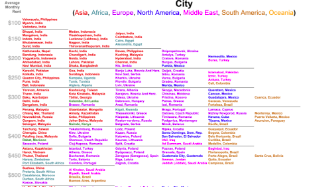What City Observatory did this week
1. Envisioning how we want to live in cities. Much of the discussion of the future of cities seems to revolve around what kind of new technologies we might apply in urban settings. But in our view, planning for the future city ought to be guided by our aspirations: what about cities gives us joy and fulfillment. In contrast to the gadget absorbed view offered by many, a recent television commercial from Samsung paints one picture of what that might be like. The big question we face is what kind of story we want our cities to help us live: If we have a story that centers on technology, vehicles and frenetic movement, we can remake our world in that image. If, instead, we have a story that embraces experience, and place and freedom, we’ll get a very different world.
2. How immigrants make America great, as always. On Independence Day, we remember that the United States is fundamentally a nation of immigrants. It’s more than just a national principle; immigration is a powerful explainer of economic success: cities with a high fraction of well-educated immigrants tend to be the nation’s most productive.
Must read
1. SUV’s implicated in the rising pedestrian death toll. The Detroit News has an investigative report revealing evidence that sport utility vehicles are a key contributor to the rising number of pedestrian deaths in the US. The story relates the findings of a 2015 NHTSA report concluding that pedestrians are two to three times more likely to suffer a fatality when struck by an SUV or pickup than when struck by a passenger car. (Hat tip to Streetsblog’s Angie Schmidt.)
2. Worldwide city rents compared. Reddit User KyleKun513 has created a graphic image of the variation in rent levels between 540 cities around the globe. Data are from Numbeo.com’s compilation of rents; the data visualization groups cities by rent levels (by hundreds of dollars per month) with color-coding by continent. Rents range from the equivalent of $200 a month or less in cities in India and Egypt, to more than $2,400 in Bermuda, Hong Kong, San Francisco and Manhattan.
3. Highway Boondoggles 2018. USPIRG is back with the fourth edition of its report on expensive, ineffective freeway projects that drain the budgets and drain the life out of cities. The report calls out the folly of freeway projects in Dallas, the San Francisco Bay area, Shreveport and other cities. USPIRG marshalls evidence that highway expansions take money from other transportation priorities, don’t solve congestion, make environmental problems worse, and add to public debt. This year’s report also contains an update on the status of prior year boondoggles.



